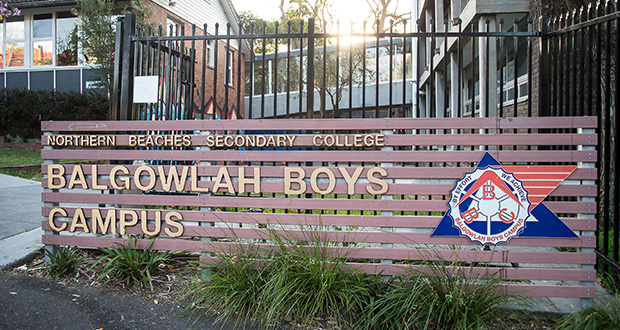It’s been an unhelpful stereotype for decades now: girls excel in English and other language-orientated subjects, while boys more easily grasp the concepts of maths and the sciences.
I saw this kind of gendered determinism played out not only as a student, but during my time as a teacher as well. Indeed, data suggests that boys are twice as likely to be near the bottom of the class.
Of course, there are exceptions that relate to a whole host of factors (socioeconomic backgrounds, toxic ideas of masculinity, teaching quality, etc.), but the phenomenon of girls outperforming boys in writing has generally been the case in the senior years.
However, at Sydney's Balgowlah Boys Campus, this trend is changing, with its students finishing near the top of the state in HSC English in the past four years. It begs the obvious question: how did this particular school achieve such impressive English results for boys?
The answer to that question was the appointment of Paul Sheather as principal almost 12 years ago when the school’s students were performing well below state averages in reading and writing, the Sydney Morning Herald reported. Sheather made it his priority to buck the trend and develop students who were literate, confident and articulate in conveying their ideas.
In re-imagining what boys could achieve in English (and more broadly literacy), the school established a 20-minute class every day to cover writing mechanics such as spelling, grammar and punctuation for years 7 to 10. However, as experienced teachers and writing experts know, these elements are critical to good writing but have little effect if taught in isolation.
From there, the school focused its intention on developing the students’ knowledge of how effective sentences were constructed. This was an advantageous move as the students could focus their “mental energy into working out what to say, rather than how to say it” when the all-important HSC exams arrived.
Instrumental in this strategy to create young men who could construct coherent, concise and meaning-packed sentences was deputy principal Benjamin Seldon, who had a strong background in teaching English as a second language (ESL).
In developing a program on constructing sentences, Seldon included teachers from all disciplines, enacting a well-established fact that literacy is not the sole purview of English teachers.
“[It involves] putting sentences on the board, word by word, and asking the kids what goes next,” Seldon told the SMH. “It’s based around a sentence scaffold that is easy for the boys to get their head around.
“It’s teaching how you write single and multi-clause sentences, and it’s incredibly easy. It seems too simplistic for people, but the boys play with the clauses like little blocks of Lego. The results speak for themselves.
“There is, unfortunately, a misconception in English that you can talk about the subject, and then you say, ‘okay, write about it’. But that’s not good enough. It needs to be more mathematical, and say, ‘this is how you write about it’.”
In teaching educators of other subjects how to take students through the program, Seldon was conscious of the fact that science teachers have a degree of trepidation in teaching writing, a perception supported by a NSW Department of Education survey of 4000 science teachers.
At the same time, however, NSW Department of Education data concluded that students in the top tiers of year 8 science assessment reported more writing instruction taking place in their science class. Furthermore, research shows that writing performance in NAPLAN is the best indicator of future HSC results.
“I know a lot of science teachers who have amazing knowledge of their content, but you can’t master that content unless you can communicate that content,” Sheather said, originally a science teacher himself.
“[Previously, students' writing] was over-complicated, difficult to read. It’s like they put too much content and not enough literacy in their writing. It would take them a page to write what they could have written more effectively in a paragraph.”
In developing an ambitious and disciplined cross-curricula writing program, Balgowlah Boys Campus not only challenged stereotypes about boys and writing. It also established itself as top-performing school in the state in HSC English for the last four years, ranking in the top 10 of all schools (including selective schools) based on band six.
Do you have an idea for a story?Email [email protected]
 Education Review The latest in education news
Education Review The latest in education news
